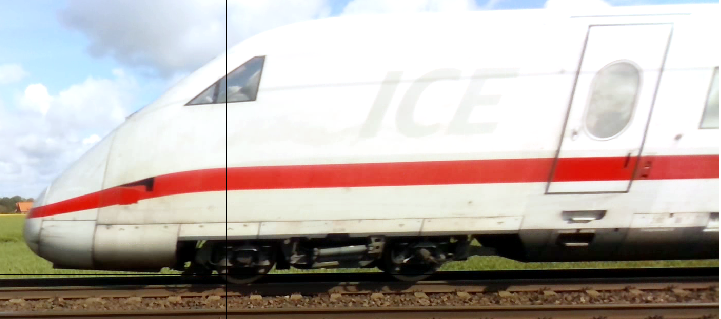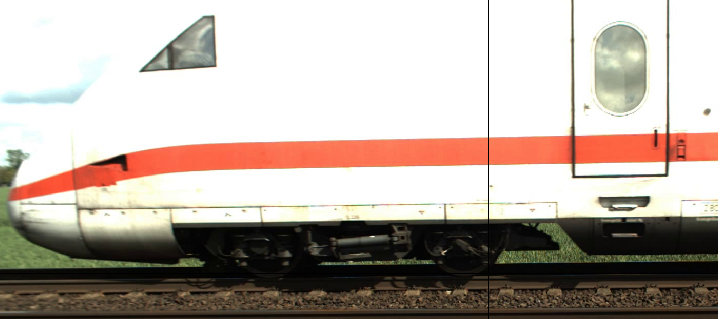When passing-by objects are measured, the camera's RGB sensor reads color information for each single pixel. Cameras with rolling shutters read line by line while global-shutter cameras read this information for all lines at once.
Fig. 1 clearly shows the offset of the ICE train's door caused by the rolling shutter. In Fig. 2, however, the door is shown without any offset as expected.
An overview of the geometric offset values for differently sized objects and varying moving speeds is provided in Table 1. The values describe the offset of an object's lower edge to its upper edge and are rounded to full cm.
If the moving object covers about 50 % of the total image height, the offset becomes significant at a speed of 50 km/h. At frequencies <500 Hz, the impact of the offset on the acoustic map can be less significant. Therefore, we recommend that you use global-shutter cameras when measuring fast-moving objects.



